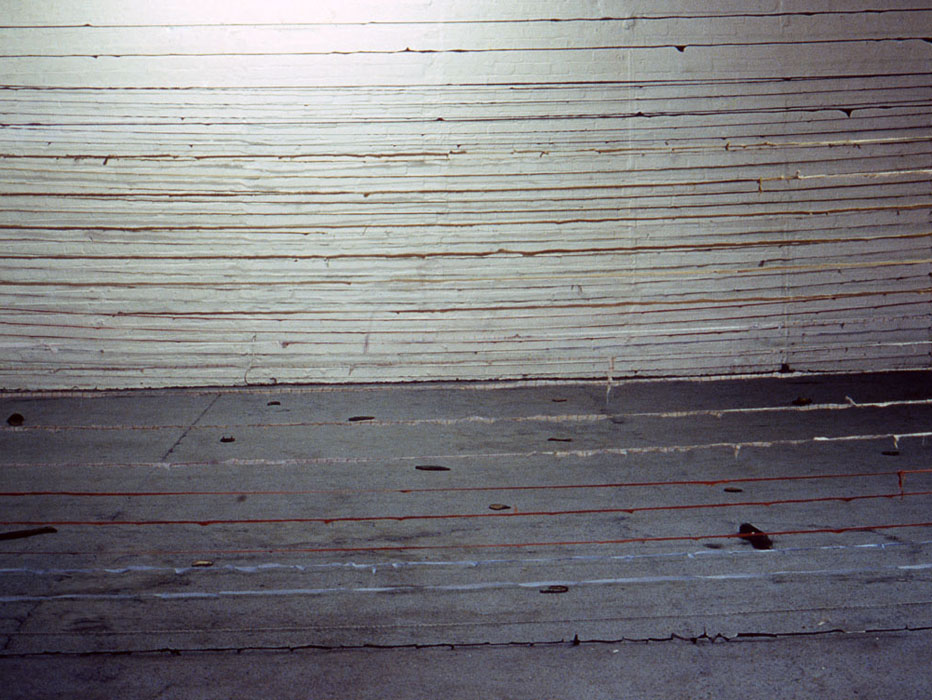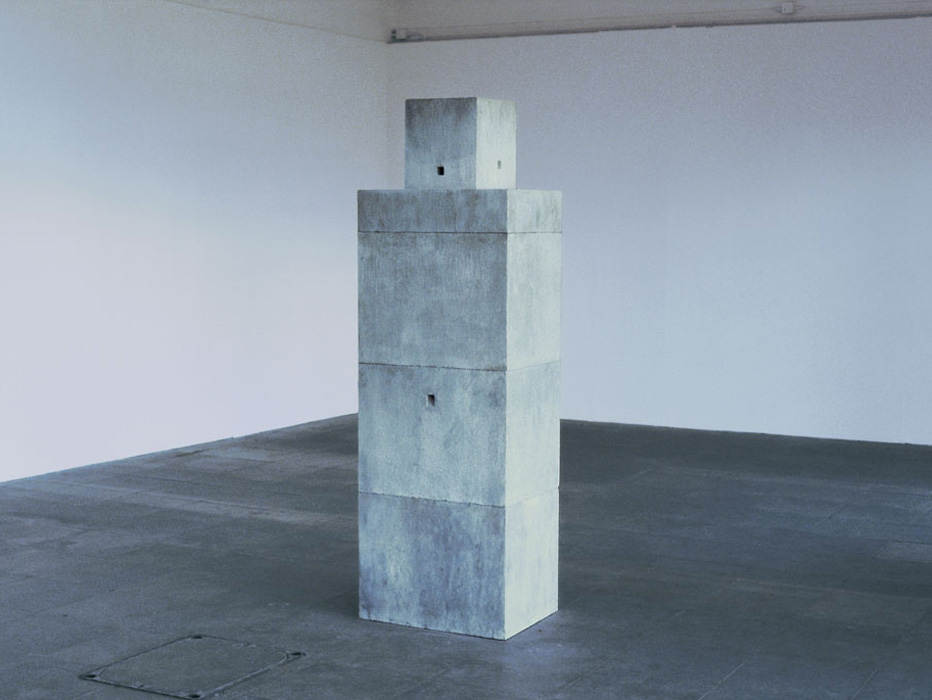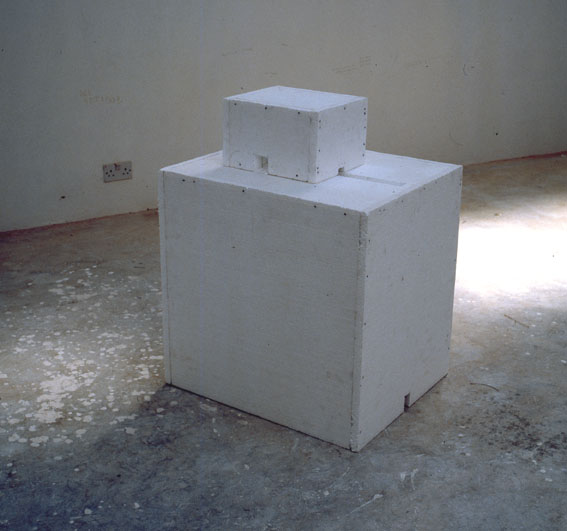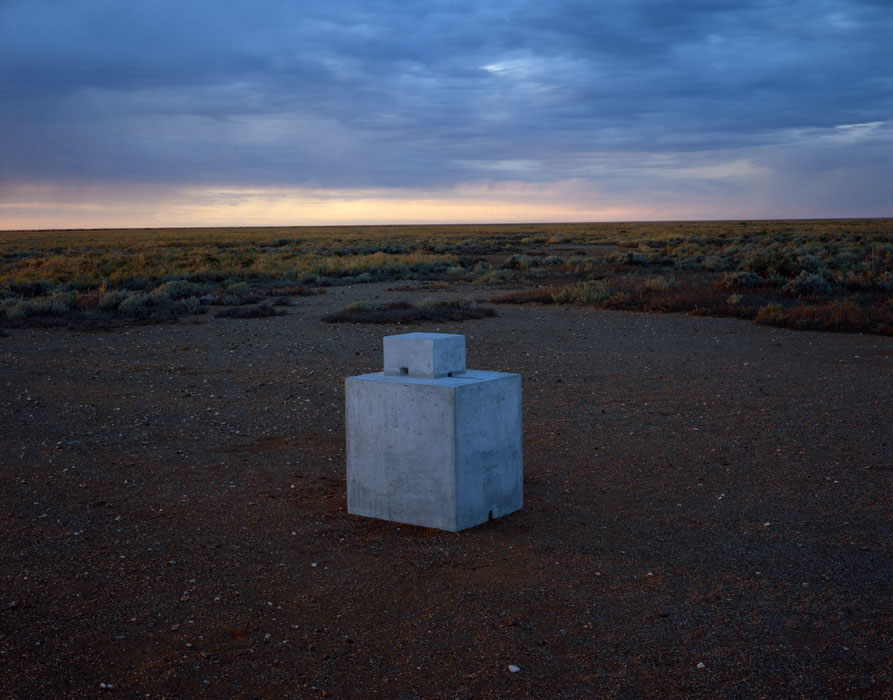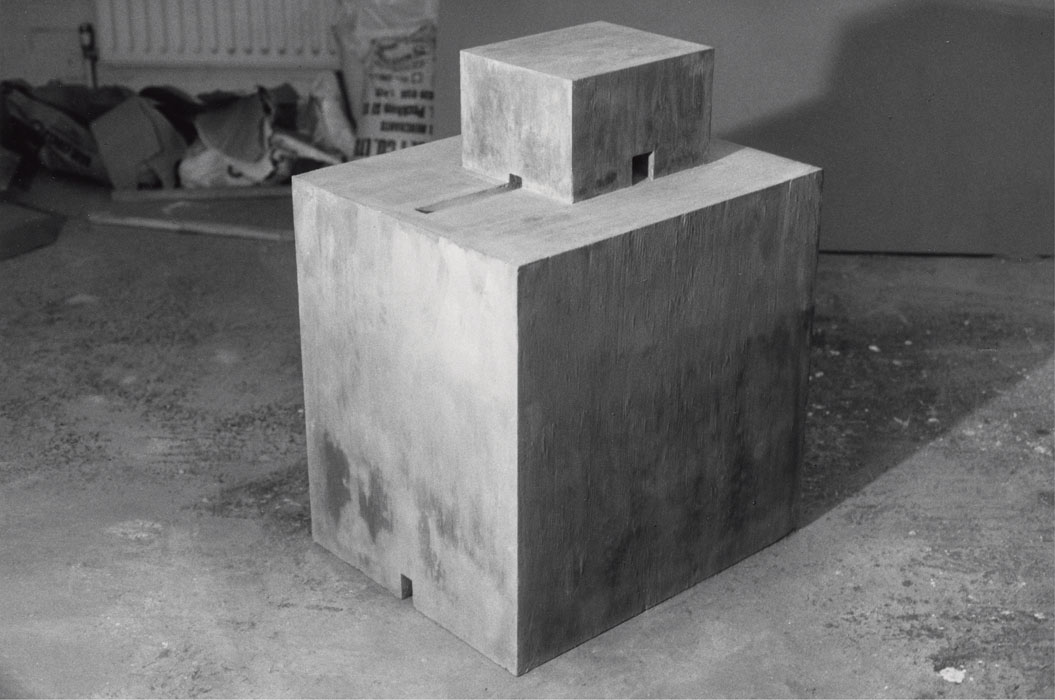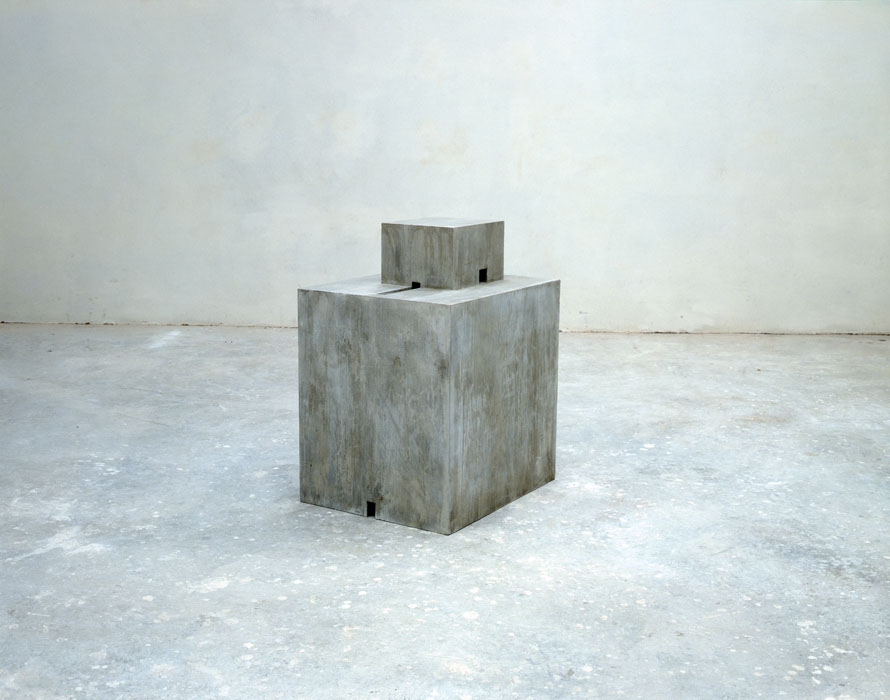The ROOM series originates with ROOM, 1980, where a set of my clothes was used to make an enclosure the size of a standard domestic room, similar to a field surrounded by a barbed-wire fence. Shoes, socks, underpants, trousers, vest, shirt, pullover and jacket were cut up into 8-millimetre-wide ribbons (just as one might peel an orange), unravelling a spiral that worked its way up the legs, body and arms. The zones of the enclosure were more or less related to areas of the body, with, for example, the trouser zone overlaying that of the socks. When first installed, this ensemble/ fence divided a 14-metre-long room in two. My 'room' was attached to the walls at one end and the line stretched out along and up the walls, crossing the middle of the space, dividing it into two 7-metre-squared spaces. The work takes an intimate, personal, subjective space and expands it into the architecture.
If this first ROOM took the layers of the material world in close contact with the skin and expanded them into the enclosed spaces of the built world, then ROOM II condensed that enclosing aspect of architecture and placed it right next to the skin. First shown at the Serpentine Gallery in 1986, ROOM II was a translation of the dimensions of my body into a modernist, cubic bunker. This concept was then repeated for an installation in the middle of the Australian desert, ROOM III, which became ROOM FOR THE GREAT AUSTRALIAN DESERT, 1989.
ROOM III is the minimum space the human body can occupy. I was measured in a tight crouching position, and as with ROOM II, two concrete volumes were made, one for the body and one for the head. I wanted this work to be exposed to the most extreme environment possible, positioned with the horizon visible from 360 degrees. I found that environment in the centre of Australia, and placed the sculpture at an undisclosed location, where the work is still sited today. This is a work that cannot be experienced palpably; no one is invited to see it but people are invited to think about it.
I thought it necessary to make a duplicate of this work, so there is a ROOM V. (ROOM VI was lost.) ROOM V, 1990, is a perfect copy of ROOM FOR THE GREAT AUSTRALIAN DESERT but was not made in Australia. It is a bunker or meditation cell, and describes a human place in space at large, using the language of architecture.
For me, ROOM is a contemporary Buddha. It asks what has happened to the human in our time of massive urbanisation (by the middle of this century, 75 per cent of the Earth's population will live within the urban grid). The darkness held inside this work is the darkness of the body, the darkness of the imagination. It is a place of power and potential; a space apart, taken out of the shared spaces of the world; a place of reflection.

